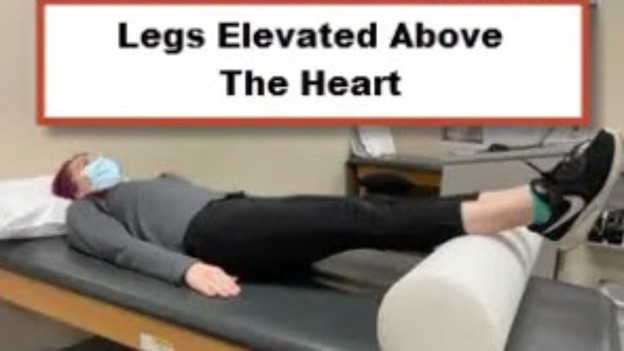A nurse is reinforcing teaching with a parent of a child who has a sprained wrist. Which of the following interventions should the nurse instruct the parent to implement during the first 12 to 24 hours to minimize swelling?
Encourage active range of motion of the extremity.
Apply warm compresses to the extremity.
Elevate the extremity above the level of the heart.
Wrap the extremity loosely with an elastic bandage.
The Correct Answer is C
Choice A rationale:
Encouraging active range of motion of the extremity is not recommended during the first 12 to 24 hours after a sprained wrist. Early movement can potentially worsen the swelling and delay the healing process.
Choice B rationale:
Applying warm compresses to the extremity is not the best choice to minimize swelling in the initial 12 to 24 hours after a sprained wrist. Heat can actually increase blood flow and promote more swelling in the injured area.
Choice C rationale:
Elevating the extremity above the level of the heart is the correct choice for minimizing swelling in the first 12 to 24 hours after a sprained wrist. Elevating the injured area helps to reduce blood flow to the area, which in turn decreases swelling and promotes healing.

Choice D rationale:
Wrapping the extremity loosely with an elastic bandage might be beneficial for providing support, but it's not the primary intervention for minimizing swelling in the first 12 to 24 hours after a sprained wrist. Elevation is more effective for reducing swelling during this initial period.
Nursing Test Bank
Naxlex Comprehensive Predictor Exams
Related Questions
Correct Answer is D
Explanation
Choice A rationale:
Popcorn can be problematic for a child with Crohn's disease. Crohn's disease is characterized by inflammation in the gastrointestinal tract, and certain high-fiber foods like popcorn can exacerbate symptoms, causing discomfort and potential irritation of the intestinal lining.
Choice B rationale:
Hot dogs are typically high in fat and can be difficult to digest, which can trigger symptoms in a child with Crohn's disease. Additionally, processed meats like hot dogs might contain additives that could worsen inflammation in the digestive tract.
Choice C rationale:
Dried apricots are also not the best choice for a child with Crohn's disease. Dried fruits are concentrated sources of fiber and can be tough on the digestive system, potentially leading to abdominal pain and diarrhea in individuals with inflamed intestines.
Choice D rationale:
Plain yogurt is a suitable food choice for a child with Crohn's disease. It is a good source of protein and calcium and contains probiotics that can promote gut health. Probiotics may help regulate the digestive system and alleviate some symptoms associated with Crohn's disease. However, individual tolerances may vary, so it's important to monitor the child's response to yogurt.
Correct Answer is B
Explanation
Choice A rationale:
Iron 100 mcg/dL The normal range for serum iron levels can vary based on age and gender, but typically, a range of 50 to 150 mcg/dL is considered normal. The provided value of 100 mcg/dL falls within this range and is not a cause for concern. Elevated iron levels can be indicative of hemochromatosis or other disorders, but this value is not concerning.
Choice B rationale:
Hemoglobin 8 g/dL Hemoglobin levels can vary by age and gender, but in general, a hemoglobin level of 8 g/dL is low and suggestive of anemia, a condition characterized by a reduced ability of the blood to carry oxygen. Anemia can lead to fatigue, weakness, and other symptoms, and the nurse should report this finding to the healthcare provider for further evaluation and management.
Choice C rationale:
Sodium 140 mEq/L The normal range for serum sodium levels is typically around 135 to 145 mEq/L. The provided value of 140 mEq/L falls within this normal range and is not a cause for concern. Deviations from this range can indicate various conditions, including dehydration or overhydration, but this value is within an acceptable range.
Choice D rationale:
Calcium 9 mg/dL The normal range for serum calcium levels can vary, but generally, a range of 8.5 to 10.5 mg/dL is considered normal. The provided value of 9 mg/dL falls within this range and is not significantly abnormal. Abnormal calcium levels can be indicative of various conditions, including thyroid disorders or kidney problems, but this value is not concerning.
Whether you are a student looking to ace your exams or a practicing nurse seeking to enhance your expertise , our nursing education contents will empower you with the confidence and competence to make a difference in the lives of patients and become a respected leader in the healthcare field.
Visit Naxlex, invest in your future and unlock endless possibilities with our unparalleled nursing education contents today
Report Wrong Answer on the Current Question
Do you disagree with the answer? If yes, what is your expected answer? Explain.
Kindly be descriptive with the issue you are facing.
